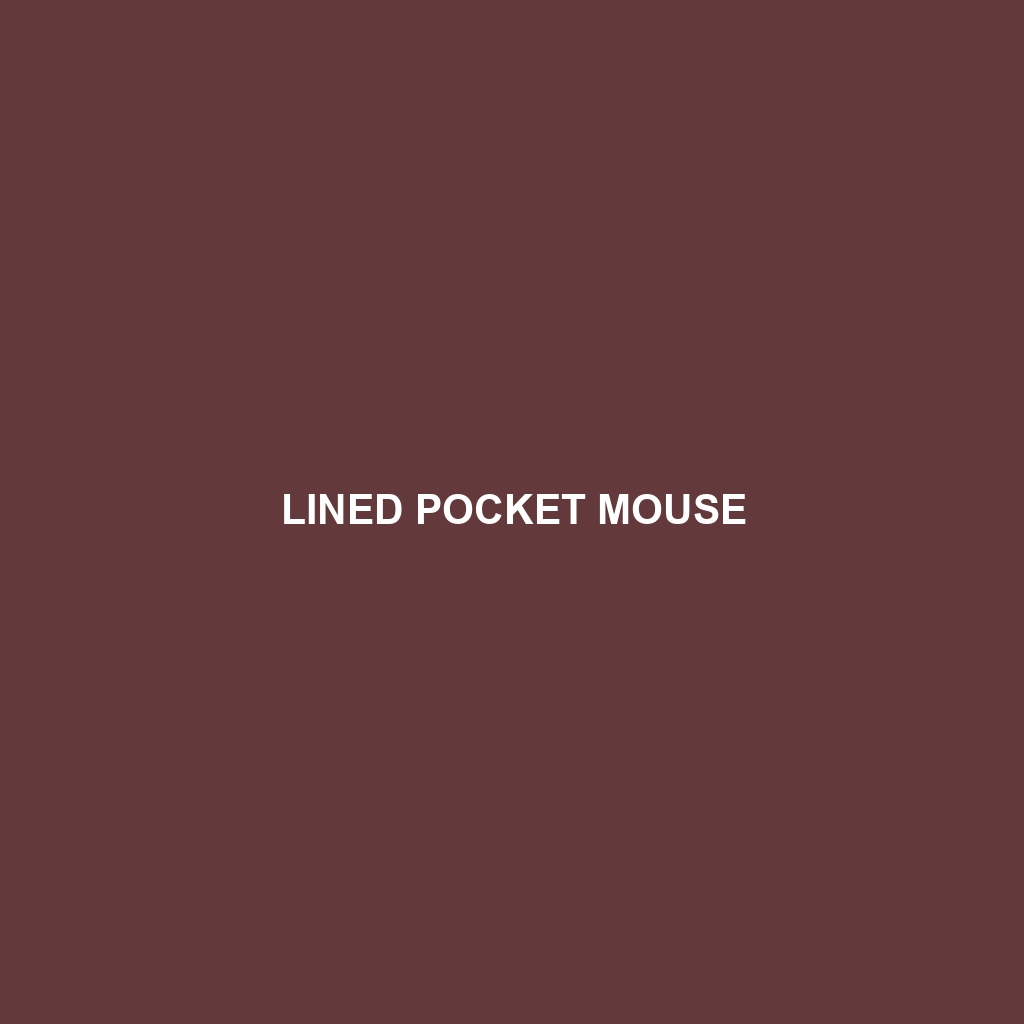Lined Pocket Mouse (Scientific Name: Perognathus lineatus)
Habitat: The Lined Pocket Mouse is primarily found in the arid regions of North America, including the southwestern United States and parts of Mexico. These small rodents prefer sandy or loamy soils and thrive in deserts, grasslands, and scrublands where they can dig burrows to escape extreme temperatures and predators. They are often associated with areas rich in vegetation that provide cover and food resources.
Physical Characteristics: The Lined Pocket Mouse is a small rodent, measuring approximately 5 to 7 inches in length, including its long tail. It features a distinctive light brown to grayish fur with a white underbelly, contributing to its camouflage in its natural environment. One of its most notable features is the presence of dark lateral stripes that run along its body, giving it a unique appearance. Its large, fur-lined cheek pouches enable it to store food for later consumption, an adaptation that allows it to survive in harsh climates.
Behavior: Lined Pocket Mice are nocturnal, which means they are most active during the night when temperatures are cooler. They are skilled diggers, often creating extensive burrow systems that serve as habitats and storage for food. The mice exhibit solitary behavior, coming together primarily during the mating season. Their agility and ability to leap make them adept at avoiding predators, while their keen sense of smell helps them locate food sources.
Diet: This species primarily feeds on seeds, grains, and various plant materials, showcasing their granivorous diet. Lined Pocket Mice are also known to consume small insects and other invertebrates, contributing to their balanced food intake. Their foraging behavior typically includes storing excess food in their cheek pouches, which they later transport to their burrows for preservation.
Reproduction: The breeding season for Lined Pocket Mice usually occurs in the spring and summer months, with females capable of producing multiple litters per year. Each litter can comprise 3 to 6 pups, which are born blind and hairless. Maternal care is vital, as mothers keep the young in sheltered burrows until they are old enough to venture out on their own. After about three weeks, the pups begin to explore their surroundings and are weaned by four weeks of age.
Conservation Status: The Lined Pocket Mouse is currently classified as “Least Concern” by the IUCN Red List, indicating that it is not considered endangered or threatened at this time. However, habitat loss due to urban development and agricultural expansion poses potential risks to local populations in certain regions.
Interesting Facts: Lined Pocket Mice have been observed to be extremely resourceful, utilizing stored food not only for sustenance but also for maintaining their burrows. Additionally, they are known to have a remarkable ability to sense vibrations, helping them detect predators from a distance.
Role in Ecosystem: As a seed disperser, the Lined Pocket Mouse plays a crucial role in its ecosystem by aiding in plant reproduction and distribution. Their activity helps to maintain plant diversity in their habitats, which in turn supports other wildlife. Furthermore, these mice serve as prey for a variety of predators, including snakes, birds of prey, and small mammals, thereby contributing to the ecological balance.
